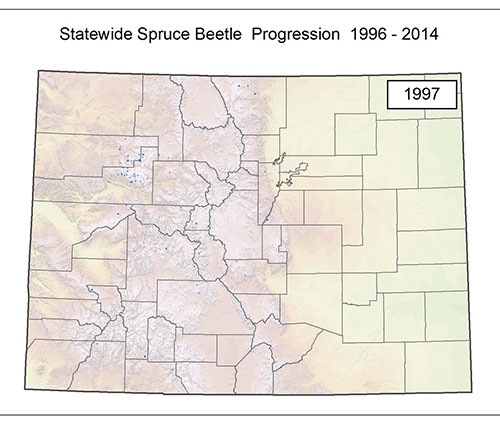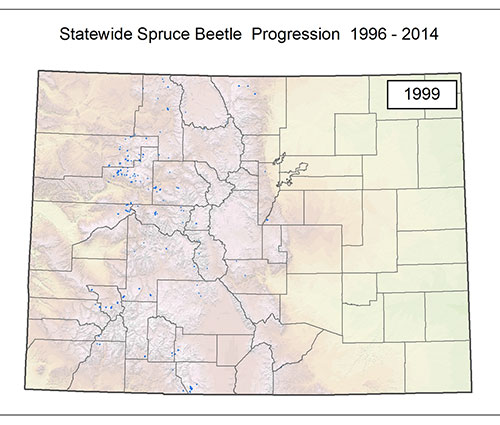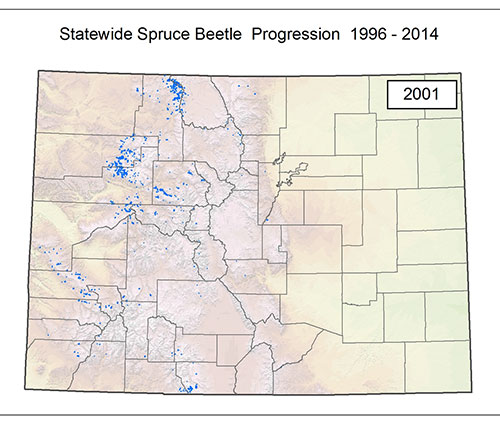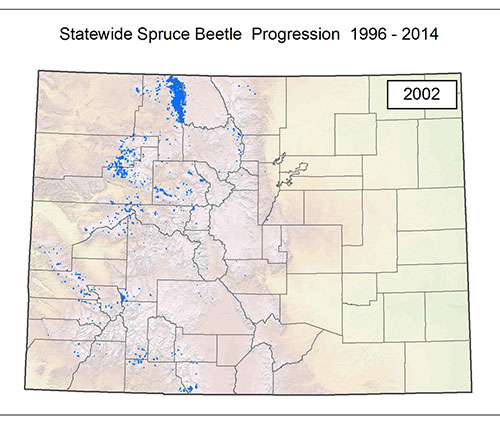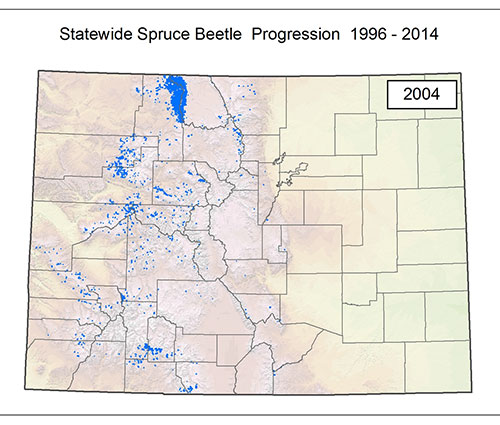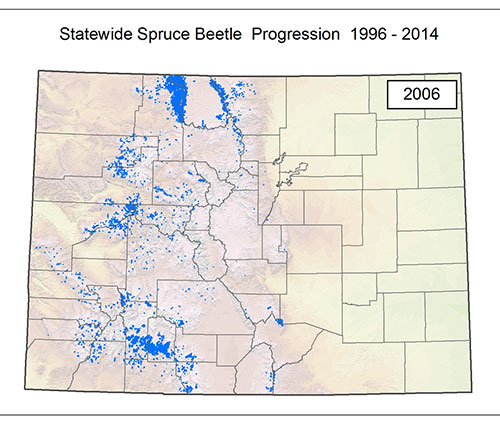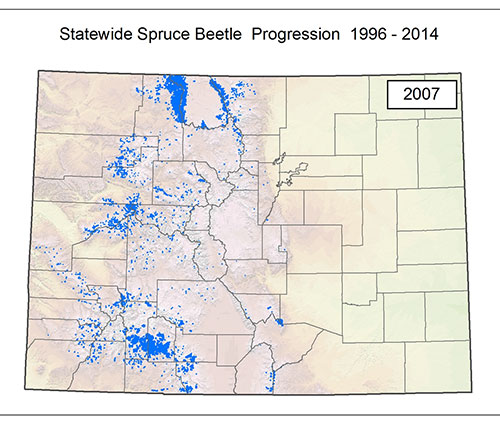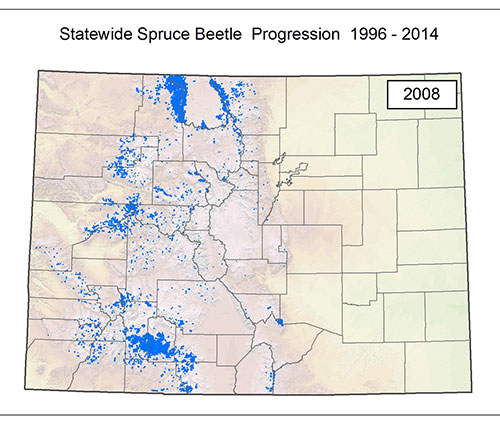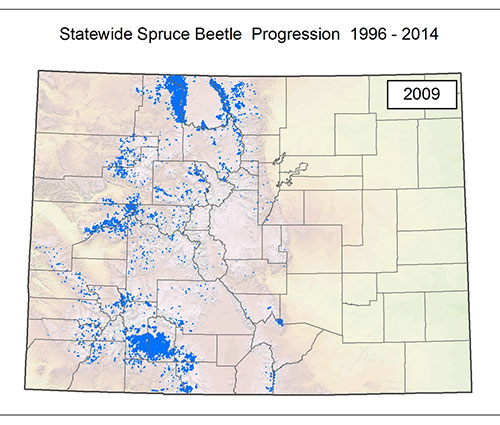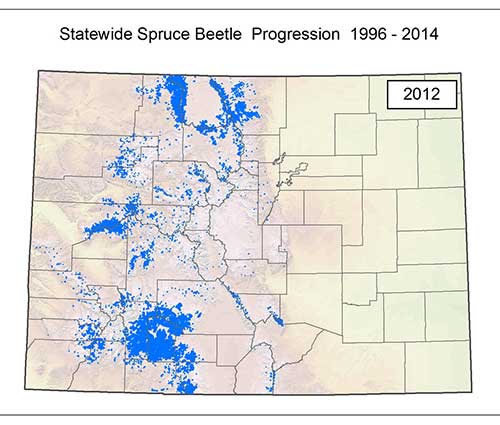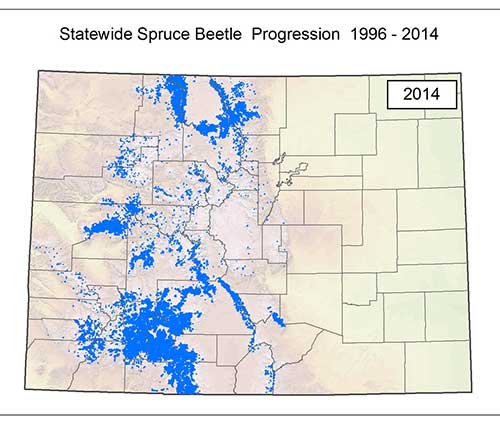Durango Field Office – Insects & Diseases
Insects and diseases can pose serious threats to a forest’s health. Our foresters are available for site visits to look at specific insect or disease concerns on your property.
If your questions cannot be resolved with the information provided, please contact the office. For a fee, foresters are available for site visits to look at specific insect or disease concerns on your property. Samples of the problem also can be sent to our state entomologist in Fort Collins for further investigation.
Spruce Beetle
- Bark beetle that attacks all species of spruce
- Attracted to large diameter trees that have been felled by
wind or stressed by natural
factors such as flooding, drought or old age - Control: Maintain healthy stands and remove infected trees immediately
More information may be found on our Spruce Beetle page.
Aspen Decline
Since 2004, rapid decline in aspen stands has been noticed in southwest Colorado – especially at lower elevations. Additionally, regeneration is sparse in stands with heavy mortality. Researchers have been unable to assign a specific causal agent; however, it appears to be a combination of drought, cankers, borers and defoliators. Ongoing research may provide some answers in the near future.
For more information, view our Common Insects & Diseases of Aspen page.
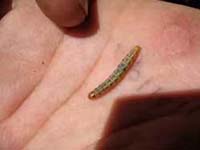
Western Spruce Budworm
- Douglas fir & true firs preferred, but will attack spruce
- Larvae feed on current year’s foliage.
- 4-5 years of continuous defoliation can result in tree mortality and significant top kill
- Control: Spray pesticide on small scale and maintain a healthy diverse forest
For more information, visit our Western Spruce Budworm page.
Western Balsam Bark Beetle
- Bark beetle that attacks sub-alpine fir and occasionally Engelmann spruce and lodgepole pine
- Attracted to unhealthy trees, particularly those weakened by old age and root disease or storm-damaged trees
- Control: Maintain a healthy stand: remove weakened and unhealthy trees

Douglas-fir Beetle
- Bark beetle that only attacks Douglas fir
- Attracted to stressed trees and prefer large old trees in dense stands
- Control: Maintain healthy stands or use MCH an anti-aggregation pheromone that “repels” the beetles
More information may be found on our Douglas-fir page.
Mountain Pine Beetle
For more information, check out our Mountain Pine Beetle page.
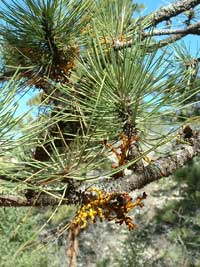
Dwarf Mistletoe
- Affects all ages & sizes of ponderosa and lodgepole pines, as well as Douglas fir and piñon pine to a lesser degree
- Parasitic plant that robs tree of nutrients & water, which causes growth reduction, poor tree form, loss of wood quality and subsequently premature death.
- Control: Prune mistletoe infected branches and/or remove infected trees
More information may be found on our Dwarf Mistletoe page.
What is Wrong with my Tree?
For more information, visit our Diseased Trees page.
Forest Insect & Disease Aerial Survey
This annual survey is led, coordinated and funded by the U.S. Forest Service Health Protection personnel. A small fixed-wing aircraft is flown about 1,000 to 1,500 feet above the treetops while the surveyor marks the location, number and identity of diseased trees on a map. The CSFS has assisted in the aerial survey since the 1970s and even more significantly beginning in 1997.
For more information, check out our Annual Aerial Survey page.



